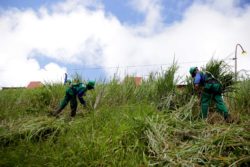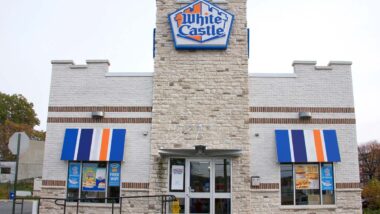Top Class Actions’s website and social media posts use affiliate links. If you make a purchase using such links, we may receive a commission, but it will not result in any additional charges to you. Please review our Affiliate Link Disclosure for more information.
First the coronavirus pandemic caused a budget shortfall that led California Governor Gavin Newsom to cancel plans for a fire prevention program and now, with wildfire season fast approaching, it is sidelining some of the state’s volunteer firefighters.
An outbreak of COVID-19 prompted state prison officials to place 12 of California’s 43 inmate fire camps on lockdown in early July, cutting the number of trained inmates available to fight wildfires by more than half. The inmates have long been an integral part of the state’s firefighting force and are often among the first on the scene, working on the ground to stop the spread of wildfires.
There were 192 inmate crews of 12 to 17 inmates each trained and ready to be deployed, but the outbreak took 98 of them out of service statewide, according to reporting by the San Francisco Chronicle. In the region most vulnerable to wildfires, Northern California, only 30 of the 77 inmate firefighting crews are available, a state Department of Corrections and Rehabilitation spokesman said.
Losing the inmate firefighters indefinitely is particularly concerning to state officials since the state’s Department of Forestry and Fire Protection, or Cal Fire, has reported more fires so far this year than for the same time period in previous years, the Chronicle reported. By July 5, California had 3,562 fires. Last year, that number was 2,041 and the previous five-year average was 2,580.
Experts have also predicted an increased risk of large fires across Northern California in the 2020 wildfire season, which begins in the fall.
What the Inmate Firefighters Do

Only inmates convicted of less serious crimes are eligible to become firefighters. They are supervised by correctional officers, Cal Fire captains or both, depending on the location they work in, according to a news report by the Sacramento Bee.
Inmate Firefighters Exposed to Coronavirus
The corrections department put the fire camps on lockdown after testing in late June revealed three inmates at the California Correctional Center in Susanville, where the firefighting training center is located, were infected with COVID-19. All movement in and out of the prison was halted immediately, but many inmates who had already been transferred to the fire camps were already exposed.
Inside the prison, the virus spread quickly. As of July 15, the corrections department reported 432 of the prison’s roughly 3,700 inmates tested positive for COVID-19, including 208 new cases in the previous two weeks.
Governor’s Plans to Cope with Wildfires
With the fate of the inmate firefighters at the mercy of the unpredictable coronavirus, Newsom announced July 9 the state will hire an additional 858 seasonal and 172 permanent firefighters this year, among other ways to manage expected wildfires.
Earlier this year, the governor scrapped plans to spend $26 million to retrofit houses and other buildings in wildfire zones with new fire-resistant materials because of the $54 billion budget deficit brought on by the pandemic.
Meanwhile, California experienced one of the driest winters on record, which put parts of the northwestern region in a severe drought, and is forecasted to have an above normal potential for large fires this fall. In addition to that, research released earlier this year by Stanford University suggests climate change might now be extending the traditional wildfire season into late summer and late fall.
Join a Free California Wildfire Property Damage Lawsuit Investigation
If you or a loved one suffered property damage in the Camp Fire, Woolsey Fire, Hill Fire or last year’s Thomas Fire, legal help is available to help you through the claim process with your insurance company.
This article is not legal advice. It is presented
for informational purposes only.
ATTORNEY ADVERTISING
Top Class Actions is a Proud Member of the American Bar Association
LEGAL INFORMATION IS NOT LEGAL ADVICE
Top Class Actions Legal Statement
©2008 – 2024 Top Class Actions® LLC
Various Trademarks held by their respective owners
This website is not intended for viewing or usage by European Union citizens.
Get Help – It’s Free
Join a Free California Wildfire Property Damage Lawsuit Investigation
If you qualify, an attorney will contact you to discuss the details of your potential case at no charge to you.
PLEASE NOTE: If you want to participate in this investigation, it is imperative that you reply to the law firm if they call or email you. Failing to do so may result in you not getting signed up as a client or getting you dropped as a client.
E-mail any problems with this form to:
Questions@TopClassActions.com.
Oops! We could not locate your form.













